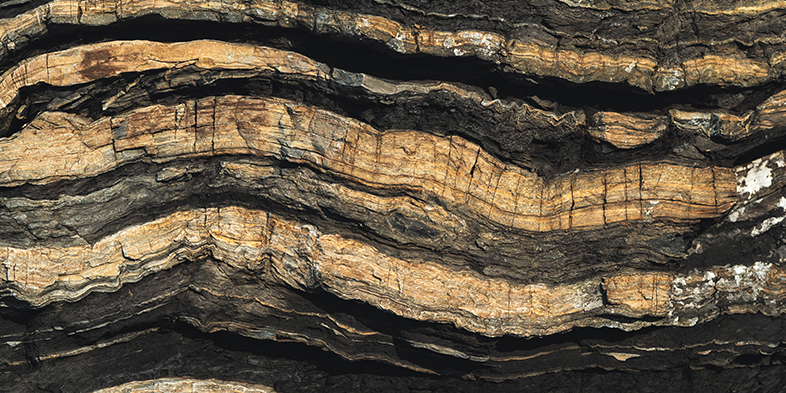Authors
Partner, Regulatory, Indigenous and Environmental, Toronto
Partner, Commercial, Toronto
Partner, Litigation; Regulatory, Indigenous and Environmental, Toronto
Associate, Disputes, Toronto
Associate, Disputes, Toronto

On January 1, 2024, new regulations came into effect under Ontario’s Oil, Gas and Salt Resources Act (the Act) that pave the way for carbon storage demonstration projects in Ontario using private wells (the Special Projects Regulation). This blog post discusses the key aspects of the Special Projects Regulation, how a demonstration project gets authorized and the implications for industry and for Ontario’s emission reduction plans.
Background: carbon storage in Ontario
Carbon storage is the permanent storage of captured greenhouse gas (GHG) emissions in deep underground geologic formations. Certain regions in southwestern Ontario have geology that may be suitable for carbon storage; candidate wells include saline aquifers in southwestern Ontario, where deep rock is saturated with saltwater. An area stretching approximately 100 kilometres from Port Dover (located approximately 70 kilometres southwest of Hamilton) to Windsor may offer ideal conditions for carbon storage since the sedimentary rock is adequately deep and porous.
Sedimentary rock formations in the Ottawa/St. Lawrence area and in northern Ontario [PDF] may also be a candidate for carbon storage, but factors such as shallow depths, thin rock layers, area remoteness and costs for transport may limit the viability of these locations for carbon storage.
The Special Project Regulation
Under the Act, the Minister of Natural Resources and Forestry (the Minister) oversees the drilling and operation of wells and other equipment used for exploration or production of oil and natural gas, salt solution-mining, the underground storage of hydrocarbons and compressed air energy storage projects. The Special Project Regulation would allow businesses to pursue “special projects” overseen by the Minister which test, assess, pilot or demonstrate activities, methods or technologies that are new or innovative for carbon storage in Ontario (and other innovative activities).
Designation
The first step in the process is to have the potential carbon storage project designated by the Minister as a special project. To do so, an applicant must demonstrate that
- the purpose of the project is to test, assess, pilot or demonstrate a technology, method or activity that is new or innovative to Ontario
- there is a reasonable expectation that it will be possible to design, construct, operate and decommission the project in a manner that protects public safety and the environment
- the project uses, or intends to use, at least one existing well or proposed well to access underground geological formations of Cambrian or more recent age
Designation requests must be made in writing and include the following information:
- a description of the project (including purpose), the wells/proposed wells and other works that will be used in the project, and the project location
- a description of how the project meets the requirements to be designated as a special project (as described above)
- a description of how the person who is making the request meets any prescribed eligibility requirements
- other prescribed requirements, including information on the requestor; the requestor’s operational history, experience, expertise and compliance history under the Act; lands where the surface and subsurface would be used; required governmental approvals for the project; local or Indigenous community engagement and consultation; identification of any recognized standards to follow; and description of project benefits[1]
Upon receipt of an application, the Minister may approve the plan for the carbon storage special project (with or without modifications) or require the requestor to prepare another plan. A special project designation remains in effect until the termination date specified in the special project designation or when the works associated with the project have been plugged, abandoned, decommissioned and/or rehabilitated.
Application
Once designation is granted, the person holding a special designation must apply for and be granted each licence and/or permit required under the Act before engaging in any well activity for the carbon storage project. Licence and permit applications must be accompanied by several documents, including
- a current corporation profile report (if applicable)
- confirmation from the applicant that all surface and subsurface rights to carry out the special project have been acquired
- confirmation that all persons from whom rights or interests have been acquired for the project have been made aware of the proposed project and its application(s)
- an insurance report prepared by an independent party related to environmental and other risks associated with subsurface geological exploration, development and storage operations in Ontario
The application must also provide certain other information, including a description of the special project (i.e., the location, the works, maps) and plans, technical reports, analyses and other documentation relating to the carbon storage project, including plans that address the full life cycle of the special project and associated wells, caverns, reservoirs and other works.[2]
Upon receipt of the licence and/or permit application(s), the Ministry of Natural Resources and Forestry (the Ministry) will conduct a preliminary assessment and notify the applicant of: (a) documentation requiring expert review; and (b) any Indigenous communities, organizations, governmental bodies and other persons to be notified about the project. Recipients of such notices may submit comments in writing to the applicant within a prescribed period. The applicant must then review and make any appropriate changes to the application with a document summarizing comments and detailing any changes made.
Operating standards
In addition to the permitting/licensing requirements, a special project must also comply with the operating standards of the Provincial Standards for Oil, Gas and Salt Resources. For carbon storage special projects, operators must also comply with the Canadian Standards Association (CSA) Standard Z741, Geological Storage of Carbon Dioxide.
Operators must register any works used in association with a well to carry out the special project (i.e., special project facility) by notifying the Ministry within 30 days after completion of the special project facility or within 15 days as information on the facility is revised.
Security
The operator of one or more wells of a special project must establish and maintain security in the form of an irrevocable letter of credit from a bank or a trust fund before commencing any site preparations for the wells or other associated works or well activity. The security is written assurance that the operator will comply with all requirements in the operator’s licence or permit, the Act, the Special Projects Regulation and any order of the Ontario Energy Board or the Ontario Land Tribunal regarding well plugging, abandonment, decommissioning, and associated works, site rehabilitation, and other maintenance or monitoring work. The amount of the security is project-specific and is required to be an amount equal to the estimated costs for such scopes of work, which are required to be set out and supported in the application for the operator’s licence and approved by the Minister.
Amendments and transfers
Amendments to the contents, licences or permits associated with a special project are possible with approval from the Minister. Transfers of the designation, licences or permits of a special project are also possible with requests and confirmations in writing to the Minister.
Implications
The Special Projects Regulation is another incremental step towards the implementation of carbon storage in Ontario, following the province’s lifting of the prohibition on carbon storage in March 2023. With the adoption of the Special Projects Regulation, businesses can explore carbon storage opportunities in Ontario while the regulatory framework for commercial-scale projects is being developed. If projects authorized under the Special Projects Regulation are successful in piloting carbon storage, further expansion of carbon storage projects in Ontario (as seen in western Canada) may be on the horizon.
Carbon storage has the potential to support Ontario’s reduction of GHG emissions and the transition to a low-carbon economy as outlined in Ontario’s Low-Carbon Hydrogen Strategy, which aspires to evolve the energy system while reducing GHG emissions. Carbon storage may have implications for industrial facilities in the Emissions Performance Standards (EPS) program, which is intended to progressively reduce GHG emissions from industrial facilities. In late 2022, Ontario amended the EPS program to recognize long-term carbon capture and storage projects, including geological storage, as an emission reduction tool at an industrial facility. However, the EPS does not contain a standalone carbon offset framework, as seen in many other GHG regulatory frameworks, that would enable (and stimulate investment in) projects that could capture and store GHG emissions from sources other than an EPS-covered facility.
Investing in carbon storage special projects now may place industry in an advantageous position to further reduce emissions and comply with the EPS program requirements if the regulatory framework for commercial-scale projects is adopted. It could also position project investors to capture value in future compliance or voluntary carbon offset markets that may recognize Ontario carbon storage projects.
However, in addition to its regulatory limitations, Ontario’s geology may also limit the potential for carbon storage in the province. Southwestern Ontario remains one of the only promising areas for carbon storage considering its existing oil, gas, salt production and underground storage of other substances. More detailed investigation and data collection are required to assess Ontario’s geological availability for carbon storage. As information and technology improve, more formations may be identified as feasible for carbon storage in the future.
If you require assistance or have any questions regarding compliance with the Special Projects Regulation or carbon storage projects, please contact a member of Osler’s Regulatory, Indigenous and Environmental Group.
[1] See O. Reg. 425/23: SPECIAL PROJECTS, s. 3, for the full list of information that must be submitted when making a request for designation.
[2] See O. Reg. 425/23: SPECIAL PROJECTS, s. 10, for the full list of information that must be included when submitting applications for a special project.

